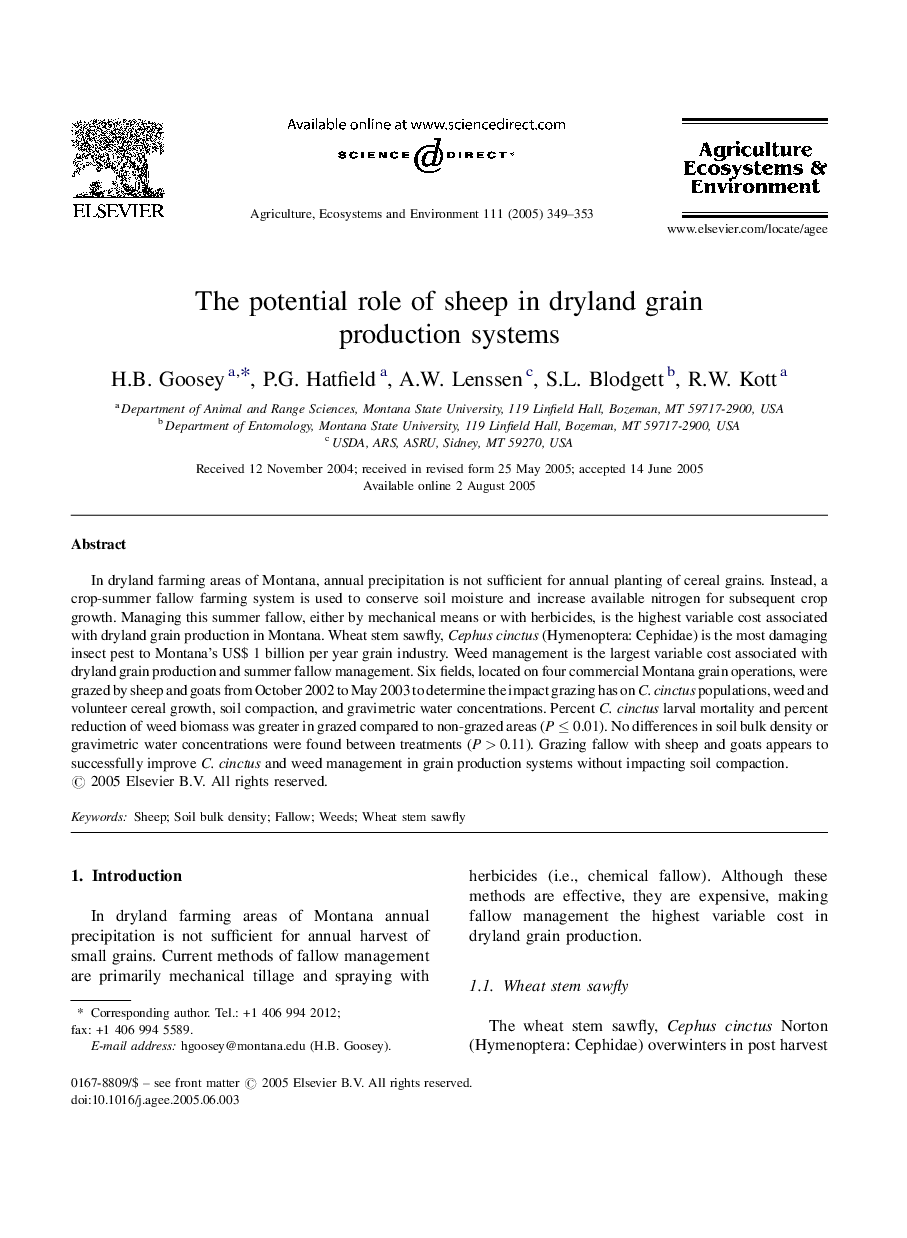| Article ID | Journal | Published Year | Pages | File Type |
|---|---|---|---|---|
| 8970741 | Agriculture, Ecosystems & Environment | 2005 | 5 Pages |
Abstract
In dryland farming areas of Montana, annual precipitation is not sufficient for annual planting of cereal grains. Instead, a crop-summer fallow farming system is used to conserve soil moisture and increase available nitrogen for subsequent crop growth. Managing this summer fallow, either by mechanical means or with herbicides, is the highest variable cost associated with dryland grain production in Montana. Wheat stem sawfly, Cephus cinctus (Hymenoptera: Cephidae) is the most damaging insect pest to Montana's US$ 1 billion per year grain industry. Weed management is the largest variable cost associated with dryland grain production and summer fallow management. Six fields, located on four commercial Montana grain operations, were grazed by sheep and goats from October 2002 to May 2003 to determine the impact grazing has on C. cinctus populations, weed and volunteer cereal growth, soil compaction, and gravimetric water concentrations. Percent C. cinctus larval mortality and percent reduction of weed biomass was greater in grazed compared to non-grazed areas (P â¤Â 0.01). No differences in soil bulk density or gravimetric water concentrations were found between treatments (P > 0.11). Grazing fallow with sheep and goats appears to successfully improve C. cinctus and weed management in grain production systems without impacting soil compaction.
Keywords
Related Topics
Life Sciences
Agricultural and Biological Sciences
Agronomy and Crop Science
Authors
H.B. Goosey, P.G. Hatfield, A.W. Lenssen, S.L. Blodgett, R.W. Kott,
